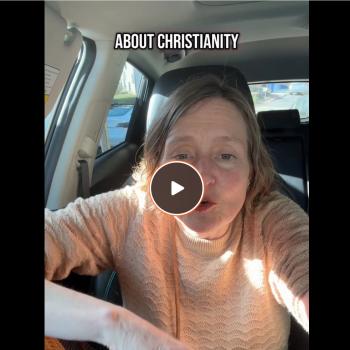Ostara was never a holiday that I particularly connected with, for all that I was born at the tail end of March, not too far past the Equinox. It was just not a time that I could ever get all that excited about. Maybe it's that I really dislike the mud and rain that so often comes with spring or perhaps that I know summer with its heat and bugs and nastiness is just around the corner, but while I do enjoy some elements of spring, Ostara just never excited me overmuch. I suppose I liked this season more as a child when I could indulge in egg hunts and Easter baskets. It wasn't really until I was an adult and had suffered the loss of a loved one that I came to appreciate Ostara's promise.
The funny thing about loss is how the truly traumatic ones come to define one's life. There's the 'before' and 'after' and in between is a chasm, a dividing line beyond which nothing is ever again the same as it was, or as one might hope. Every loss is a destruction, a decimation, a rending of the self. It weighs down the spirit. It hollows out the heart. It shatters one's sense of oneself in the world. What Eostre taught me is that every destruction like that is also a creation and holds within it the potential for rebirth. That sounds inconsequential and shallow, cliché even, but when all color, light, and joy has been stripped from your world with the death of a loved one (in my case, my adopted mom), it is no small thing at all. It is everything, the giving back of life-restoring breath, a resuscitation, a reanimation, a calling back to life. Sometimes, it's the only lifeline visible in the dark places into which the heart can sink.
In its essence, that is what this holy tide is: a calling back to life. It's a renewal not only of the land, but of the senses, heart, and spirit too. We are changed and crafted by the lives we live. Our experiences wear us down, hone us, and in the end, define who and what we are. I think perhaps grief does that most of all, though something of this process is inherent in all the struggles of living. Ostara promises renewal in the midst of those struggles. She holds out to us Her blessings, Her elixir of life, and love, and yes, even joy. She unerringly has the power to tease the heart into joy and that is precisely what this time, this holiday is about: a rebirth of joy.
Joy is not something we talk a lot about as Heathens. I first started thinking on this last month, when Charming of the Plough came round. Our worship should be filled with joy. It should be filled with celebration. We never talk about that or emphasize it though, and sometimes it seems as though our very ritual structure is designed to downplay it. We're sadly Protestant in our expectations as contemporary Heathens. Yet Eostre stands in stark contrast to that grim uniformity. She brings the gift of celebration, of dance, of song, of graceful rejoicing, of gaiety. Most importantly of all She lifts the spirit gently up and out of the morass of pain that is so often a byproduct of living and loving.
Perhaps that is why the egg is such a potent symbol of Her power. It represents hope, as the rabbit represents growth. We can laugh at these symbols, find them cute, even silly, and perhaps that is Her gift as well, for I believe that play was an important aspect of Her mysteries. We need to reclaim that. We need to be fearless in reclaiming that playfulness. Sometimes playfulness is precisely the tonic necessary to the grimness that life can so often deliver. If it takes a rabbit and some chocolate eggs to teach us how to do that, then so be it!
Eostre whispers Her promises at this time. She calls us to remember that it is not only grief that transforms the spirit but that great joy can do so as well. She calls us to a love affair with joy, and will teach us how to court it with ardor. She is all about the promise of life, for as much as life can entrench us in sadness and grief, it is also filled with beauty, wonder, courage, grace, magnificent opportunities for connection, and yes, even joy. There is joy in living. She will teach us to seek all of that out. She may even teach us to revel in it. Surely She will show us how to hold onto these things with zeal and zest and fervor, to see us through the darkest of times, to sustain our spirits, cushion our hearts, and to lead us to finding our own internal spring.
She is a Goddess of springtime after all, the dawn of the year that parallels the dawn of the heart after grief. Her grace is the easing of burdens, or the finding of a measure of happiness while in the midst of them. Hers is the gift of space and time and breath, a liminal moment stolen from between the dark force of Yule and the hot passions of Litha, a moment given to grace and play and to the quest for that restorative joy. She is a Goddess of growth and hope and tremendous courage to embrace living in all its permutations.
Ostara is about the future. It reminds us of the promise of things to come, of the turning of cycles, the shifting of seasons, and the slow healing that time alone can bring. This time tells us that nothing is eternal. Nothing is unchanging. Nothing remains the same. It reminds us to hang on, hang in there, knowing that in time the cycle will turn again and we will find ourselves ready for the renewal that this time and this Goddess can so kindly bring. Moreover we are reminded not to scoff at such kindness for in the end, before anything else, She is the force that sustains.
3/16/2011 4:00:00 AM





